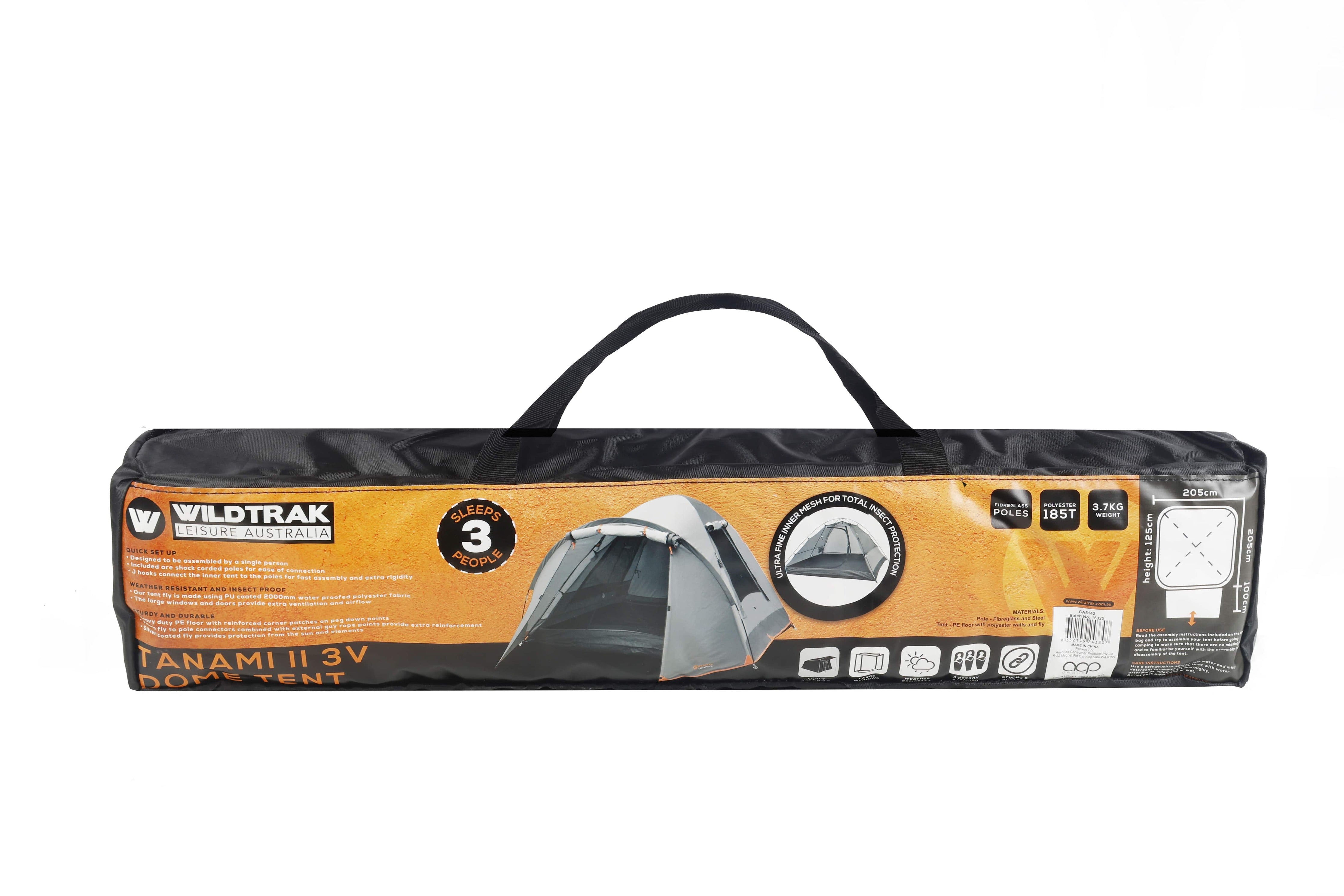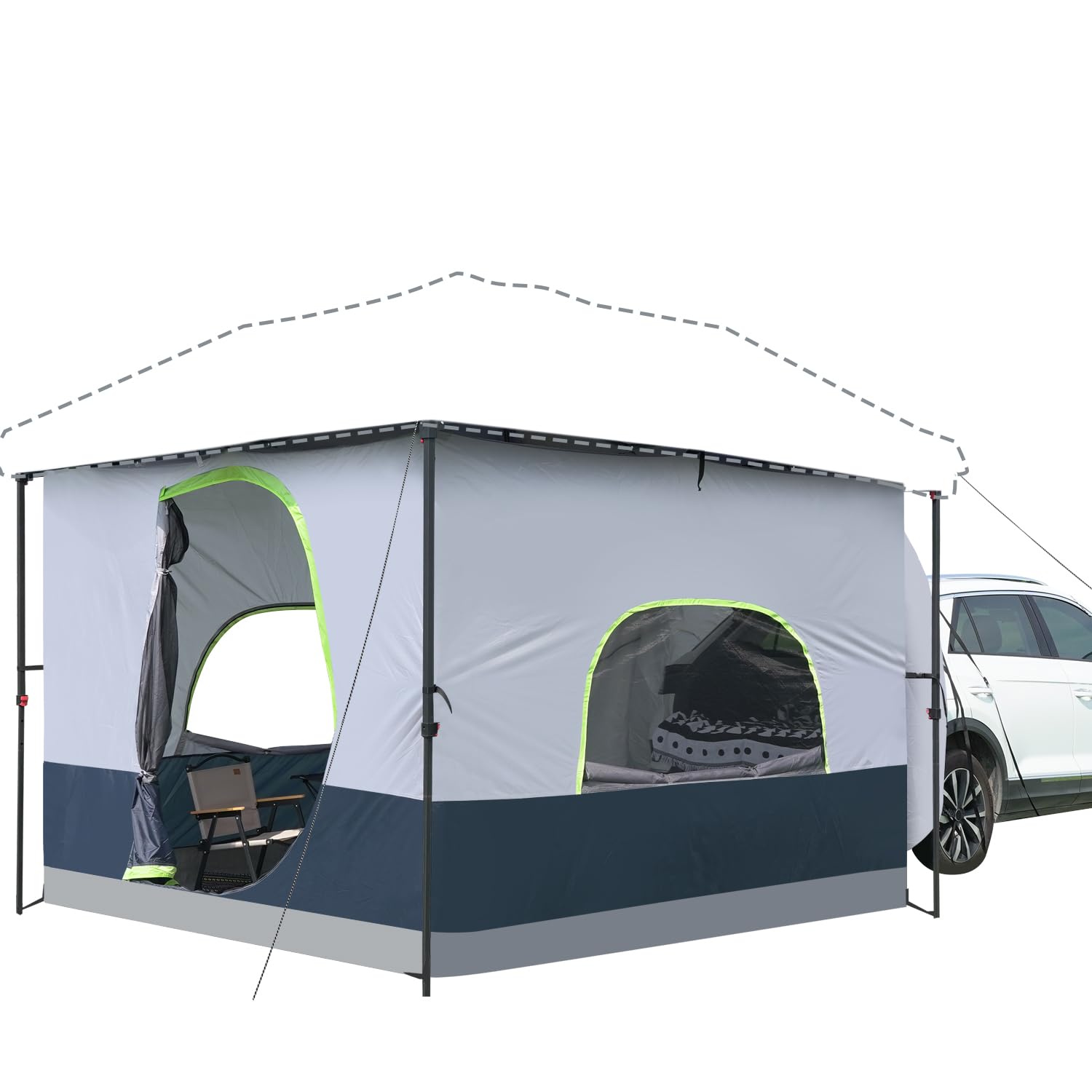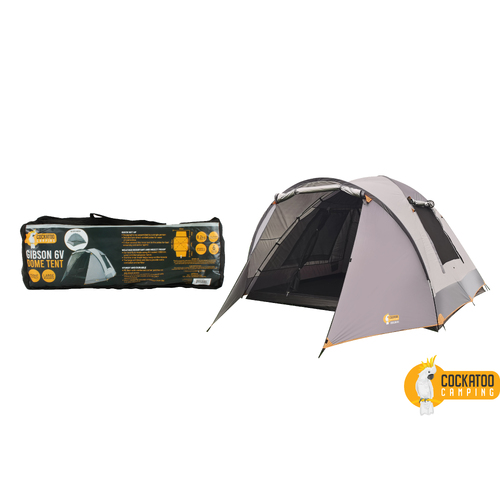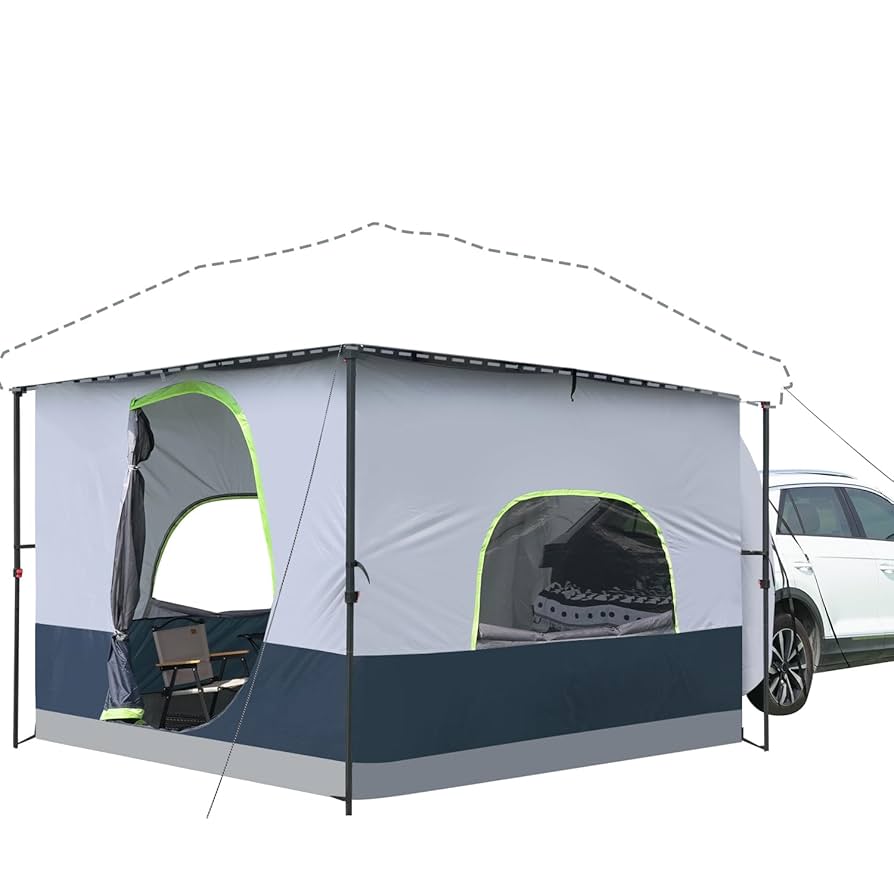This blog post may contain affiliate links. As an Amazon Associate I earn from qualifying purchases.
Are you tired of dealing with tents that just don’t hold up due to the lack of Tent J-Hooks? Imagine being in the middle of a camping trip, only to find your shelter collapsing due to weak connections.
It’s frustrating, isn’t it? That’s where Tent J-Hooks come in. These small but mighty components, especially the inner connection type, play a crucial role in ensuring your tent remains sturdy and reliable. They might not seem like much at first glance, but J-Hooks are the unsung heroes of camping gear.
By the end of this article, you’ll discover why they’re essential for your outdoor adventures and how they can make your camping experience hassle-free and enjoyable. Prepare to unlock the secrets of tent stability and revolutionize your camping setup!
Best Sellers: Tent J-Hooks (Inner Connection)
Last update on 2025-10-23 / Affiliate links / Images from Amazon Product Advertising API

Credit: www.wildtrak.com.au
Also Read: Tent Porch Extension: Enhance Outdoor Comfort Effortlessly
Choosing The Right J-hooks
Choosing the right J-Hooks is crucial for securing your tent properly. The correct choice ensures stability and ease of setup. Different tents require specific hooks to function effectively. Understanding these differences can make your camping experience smoother and safer.
Material Matters
J-Hooks come in various materials like plastic, steel, and aluminum. Plastic hooks are lightweight but less durable. Steel hooks offer strength and resistance to bending. Aluminum hooks provide a balance between weight and durability. Choose based on your camping needs and conditions.
Size And Compatibility
Ensure the J-Hooks fit your tent’s grommets and poles. Incorrect size can lead to setup issues and instability. Measure your tent components before purchasing. Check manufacturer recommendations for compatibility. This prevents unnecessary frustration during setup.
Weather Resistance
Weather-resistant J-Hooks withstand harsh conditions without degrading. Look for corrosion-resistant coatings or materials. This ensures longevity and reliable performance in different climates. Waterproof features are beneficial for rainy environments.
Ease Of Use
Choose J-Hooks that are easy to attach and detach. User-friendly designs save time during setup and takedown. Consider hooks with simple mechanisms or quick-release features. This improves your overall camping efficiency.
Cost Considerations
Balance cost with durability and functionality. Cheaper options may lack strength or longevity. Investing in quality hooks can prevent future replacements. Evaluate your budget and camping frequency to make informed choices.

Credit: www.amazon.com
Understanding Tent Structures
Camping offers a unique way to connect with nature. A tent is essential for this experience. Understanding tent structures helps you choose the right one. This knowledge ensures a safe and cozy shelter.
Basic Components
Every tent consists of key components. The tent body provides the main living area. Poles give structure and support. The rainfly offers weather protection. Stakes anchor the tent to the ground. Each part plays a vital role.
Role Of J-hooks
J-Hooks are small but important. They connect the tent to its poles. This ensures stability and security. J-Hooks are easy to use. They make setup simple and quick. Without them, a tent could collapse in strong winds. These hooks add to the tent’s durability. They help maintain the tent’s shape and structure.
Setting Up J-hooks
Tent J-Hooks offer a simple way to connect inner tent components securely. They ensure stability and easy setup for campers. These hooks make assembling the tent quick and hassle-free, providing a reliable hold.
Setting up J-Hooks in your tent can make a world of difference when it comes to the stability and overall functionality of your temporary home in the great outdoors. These small yet essential components help connect the inner parts of your tent, ensuring everything holds together firmly. If you’ve ever struggled with a tent setup, understanding how to properly use J-Hooks might just be the game-changer you’ve been looking for.
Step-by-step Guide
To start, lay out all your tent components, making sure you have all the necessary parts, including your J-Hooks. Once everything is organized, connect the tent poles according to your tent’s instructions. Next, you’ll want to attach the J-Hooks to the corresponding loops on the tent’s fabric. Simply hook them in place, ensuring they are securely fastened. Finally, adjust the tension as needed by pulling the fabric taut. This will ensure a snug fit, keeping your tent sturdy and resistant to winds.
Common Mistakes To Avoid
One common mistake is rushing through the setup without checking all connections. This can lead to a shaky tent that might not withstand rough weather. Another mistake is not tightening the hooks properly. If the J-Hooks are loose, your tent will sag and may not provide adequate protection. Avoid using damaged or mismatched J-Hooks, as they can compromise the structural integrity of your tent.
Always double-check your equipment before heading out on your adventure. Have you ever found yourself in the middle of nowhere with a tent that just won’t stand up? Ensuring your J-Hooks are correctly set can prevent such frustrating scenarios. Always prepare and practice at home before your trip to ensure a smooth setup in nature.
Enhancing Stability
Tent J-hooks enhance stability by securely connecting the inner fabric, preventing movement and wear. These hooks ensure the tent stays firm, even during strong winds or heavy use. Perfect for maintaining structure in various outdoor environments.
When setting up a tent, enhancing stability is crucial to ensure a safe and comfortable camping experience. Tent J-Hooks are invaluable for this purpose, offering a secure inner connection that helps keep the tent anchored. Their role in maintaining structure and strength often goes unnoticed until you find yourself in unpredictable weather conditions or on uneven terrain. So, how can you make the most of Tent J-Hooks to boost your tent’s stability? Let’s dig into some practical tips.
Proper Tensioning
Getting the right tension on your tent’s J-Hooks can make all the difference in stability. Make sure the hooks are securely attached and adjust the tension until the fabric is taut but not overstretched. This prevents the tent from sagging and offers better resistance against wind. Next time you set up your tent, think of it as tuning an instrument. The right tension can transform a wobbly setup into a firm, weather-resistant shelter. Check each hook to ensure they’re evenly balanced to maintain structural integrity.
Weather Considerations
Weather can be unpredictable, but your tent doesn’t have to be. Tent J-Hooks play a vital role in keeping your tent grounded during sudden gusts of wind or heavy rain. Consider using additional guy lines with the J-Hooks for extra support when expecting bad weather. Think about your last camping trip. Did the weather turn unexpectedly? Having extra J-Hooks and guy lines in your kit means you’re always prepared for Mother Nature’s surprises.
The key is to anticipate changes in weather. If you’re heading to an area known for its strong winds, ensure your J-Hooks are positioned strategically to brace against the direction of the wind. By focusing on these two aspects—proper tensioning and weather considerations—you can enhance the stability of your tent dramatically. How will you adapt your setup on your next adventure to ensure a safer, more secure camping experience?
Maintaining J-hooks
Maintaining J-Hooks is essential for ensuring the longevity and safety of your tent setup. These small, often overlooked components play a crucial role in securing the tent’s inner connection. Imagine the frustration of setting up camp only to find your tent is unstable due to worn-out J-Hooks. Regular maintenance can prevent such inconveniences. Let’s dive into how you can keep your J-Hooks in top shape.
Inspection Tips
Regular inspection of your J-Hooks can save you from unexpected tent failures. Check for any signs of wear and tear or rust. Look closely at the hooks and the surrounding fabric. Even minor issues can lead to bigger problems if ignored.
Use a flashlight to examine the hooks in low-light conditions. This helps you spot hidden cracks or bends. If you notice any deformation, it might be time to consider a repair or replacement.
Repair And Replacement
If you find minor damage, repairing J-Hooks can be a cost-effective solution. Use a hammer to gently reshape bent hooks. For rust, applying a rust remover can restore the metal’s integrity.
However, if the damage is severe, replacement is the safer choice. Check your tent model to buy compatible J-Hooks. Investing in quality replacements can improve the durability of your tent.
Don’t wait for a camping trip to realize your J-Hooks need attention. Regularly maintaining these components ensures your outdoor adventures remain hassle-free. Have you checked your tent’s J-Hooks lately?
Innovative Uses
Tent J-Hooks, often seen as simple camping gear, have versatile uses. Their design offers more than just holding up a tent. These hooks can be repurposed for various tasks, making them a handy tool for outdoor enthusiasts.
Alternative Applications
Tent J-Hooks can be used beyond camping. They can hang tools in your garage. They are perfect for organizing cords and cables. These hooks can hold small garden equipment too. In the kitchen, use them to hang utensils. They can even help organize your craft room.
Camping Hacks
J-Hooks can improve your camping experience. Hang a lantern in your tent for light. Use them to secure food bags from animals. They can hold clothes or towels to dry. Attach a hook to your backpack for quick access items. They can even keep your campsite tidy by hanging trash bags.

Credit: www.kgelectronic.com.au
Frequently Asked Questions
How To Anchor A Tent To The Ground?
To anchor a tent, use sturdy stakes and drive them into the ground at a 45-degree angle. Secure the tent’s guylines tightly. For sandy or loose soil, consider using sandbags or specialized stakes. Always check for stability before settling inside.
What To Do When The Ground Is Too Hard For Tent Pegs?
Use rock or sandbags for additional weight. Opt for screw-in or heavy-duty pegs. Pre-drill holes with a hammer drill. Use a mallet to tap pegs gently. Secure ropes to nearby trees or structures for stability.
How To Get Tent Stakes Out Of Hard Ground?
Loosen soil around stakes with water or a rubber mallet. Wiggle and pull stakes gently. Use a stake puller for tough spots. Ensure your safety by wearing gloves.
How To Put Tent Pegs In Hard Ground?
Use a hammer or rubber mallet to drive tent pegs into hard ground. Start at a slight angle for better grip. Wet the ground slightly if needed for easier penetration. Consider using rock pegs or nail-style pegs for tough terrain.
Always ensure pegs are secure and stable.
Conclusion
Tent J-hooks offer essential support and stability. They connect your tent parts securely. Choosing the right hooks ensures a stress-free camping experience. They make set-up quick and easy. Quality J-hooks withstand rough weather conditions. They enhance your tent’s durability and safety.
Always check your hooks before each trip. This ensures they are in good condition. Investing in reliable J-hooks is a smart choice. It brings peace of mind on your adventures. Whether new to camping or experienced, J-hooks are a must-have.
Enjoy your outdoor trips with confidence. Safe camping starts with the right gear.












